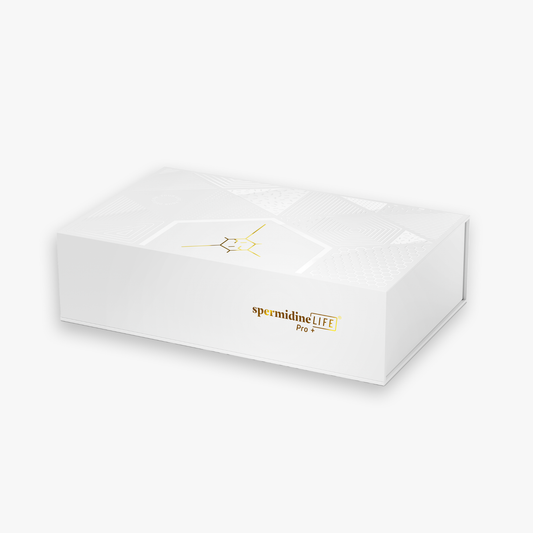
How do we learn best? Learning types and their backgrounds
Science, TLL LongevityLabsWhen we think of the words "learning" or "learning type", we usually think of school or an apprenticeship where we spent tedious afternoons over books and study materials. Yet we actually learn every day without even realizing it! Whether we're listening to a story, reading a book, or catching up with a friend, our gray matter takes in every piece of information and stores it (depending on concentration and importance). But learning doesn't always work the same way (or with the same efficiency). Have you ever had the feeling that you can remember some content much better than others? Have you ever sat in a presentation and afterwards you could still remember the graphics, but not what was said about it? Maybe it has something to do with your learning style!
In order to better understand how we learn and why our brain cells store some impressions better, many scientists have already dealt with this topic. One of the aspects that are often mentioned in this context are learning types.
What are learning types?
Maybe you still remember your school days when you had to find out to which "learning type" you belong. These are based on a system that tries to identify the different ways in which each person takes in information and stores stores knowledge into categories. Best known for his division of learning types is Frederic Vester. Vester was a German biochemist and university professor who studied in depth the psychology behind different learning strategies. His findings? Roughly speaking, he has named four learning types into which every person can more or less be classified. This classification is mainly based on the assumption that people can store knowledge differently, depending on how this knowledge is presented to them. Particularly in the course of the school time still much on the theory of the learning types is built, besides, there are meanwhile already some experts, who raised criticism at this categorization. But we will come to that. For the time being we would like to begin with the conception of the learning types!
The visual learning type
People who belong to the visual learning type memorize content best in the form of - you can already guess - visual representations. This means that especially pictorial content such as mind maps, graphics, colored markings or distinctive shapes are more easily stored and thus offer a faster learning process for the brain cells.
The auditory learning type
Individuals who fall into the auditory learning type category prefer to acquire knowledge that they hear. Be it through audio books, conversations, voice recordings or other auditory aids. Unfortunately, it can also lead to problems if you are in a noisier environment and are thus more easily distracted. Since there is not an auditory version for all content, it is often also recommended to simply read texts aloud to oneself, or to record them.
The haptic learning type
The haptic learning type falls more into a category of touching. People who fall into this group learn best by trying things out, experimenting, modeling, or simply getting a feel for processes by recreating them. Of course, this is primarily applicable to practical topics - theoretical content is often difficult to recreate or even touch.
The intellectual learning type
If you belong to the intellectual learning type, then you are most likely to remember things that you critically question, think through or discuss. That's why this type of learner is often called an abstract-verbal type of learner, because it's about memorizing information while discussing it. And abstract is a very good description for this type of learner - because Vester has been criticized for naming this type in particular. Because acquisition of knowledge (no matter in which way) is always based on some kind of understanding and cognitive processing, which in turn means that every learning type can be assigned to the intellectual type in one way or another.
Apropos criticism of the learning types
As announced earlier, Vester has reaped a great deal of criticism over the years for the listing of his learning types. One of the most frequently mentioned points here is the one we have already addressed above: While the first three learning types only deal with the perception of information and how it is processed by our brain cells, the intellectual learning type refers exclusively to how this information is processed and further processed in our brain. This makes the learning types not only very poor, but almost impossible to compare. This is because perception on a visual, haptic or even auditory level always precedes comprehension on an intellectual level and happens one step before, so to speak.
Another major criticism of Vester's theory is that in normal cases no one can be placed exclusively in one category. Many scholars have already addressed the fact that information is best absorbed by us when the different channels of perception are used together. So in short, when we take in content in multiple ways, our brain has more clues to pick out important content and process it in multiple ways. What's important to remember here, though, is that each of us has different preferences! That is, it may be more comfortable for our brains to see, hear, and feel information in multiple ways, but that doesn't preclude there from still being a preferred perceptual process that works best for us.
Building on all this basic information and critiques, many other learning theories and techniques have also been established over the years, combining different areas of learning. These include, for example, learning types such as the communicative type, the experiential type, or even combinations of different previous learning personalities.
Conclusion
Even though the classical theory of learning types according to Vester should perhaps not simply be applied without being questioned, it has formed an important basis for a better understanding of thinking and learning processes. Our gray cells process each piece of information in its own way and consist of a complex interplay of signals. A combination of different impressions is ultimately the surest way for us to remember content. But that doesn't mean we can't still prefer one way or another! A better understanding of how our brain works can be a great help for everyday life. Do you know how you learn best? Tell us about it!






